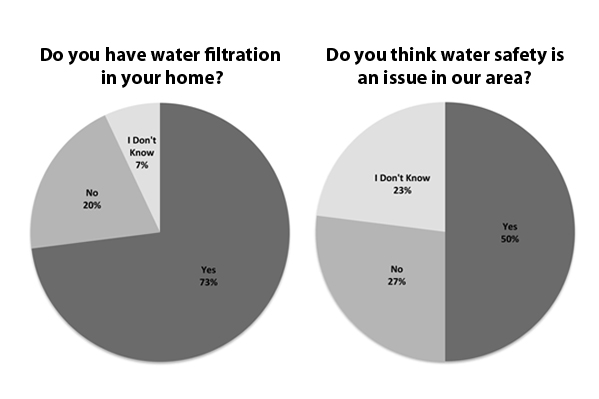Untold Dangers of Local Water Supply
Chemical storage tank leak in West Virginia leads us to question the quality of our water.

Two polls conducted from a pool of thirty Friends students show water-related statistics in our community.
On January 9, 2014, a clear but harmful chemical oozed from an old storage tank into the Elk River in West Virginia. The chemical contaminated much of West Virginia’s drinking water and hospitalized hundreds of its citizens. The spill left approximately 300,000 West Virginians without access to clean water for almost a week. On January 13, the health department gave the all-clear for running water to be turned back on. Discussions of how the chemical got leaked in the first place and what the health department will do to prevent similar incidents rage on.
The chemical that leaked into the river was an unregulated coal-processing chemical known as MCHM, 4-methylcyclohexane methanol. The lack of information pertaining to the toxicity of the chemical has raised national concern. According to The Washington Post, the chemical’s 15-page material safety data sheet uses the phrase “no data available” 152 times. Many chemicals in the United States are equally untested. Chemicals for the most part are “innocent until proven guilty” in regards to safety regulations enforced by the United States Department of Health, as well as the Centers for Disease Control and Investigation. Because the United States’ main chemical law, the Toxic Substances Control Act (TSCA), was passed in 1976, many aspects of the law are outdated and leave chemicals unchecked and underregulated.
Water contamination is regarded as one of the greatest dangers of untested chemicals. For example, in the race for an alternative energy source, fracking has emerged as a hopeful contender, but not one without dire potential environmental consequences. Dramatic footage of tap water setting on fire and irate parents concerned about the lack of information about threats to their water supply frequent the nightly news. Chemicals involved in the fracking process, such as methane gas, leak from the system and contaminate nearby groundwater. Studies have shown the concentration of methane gas to be 17 times higher in drinking water wells in close proximity to fracking sites.
Debates about water contamination from industries like chicken farming, fracking, and factory manufacturing traditionally pit corporate entities against environmentalists with only government regulation between them. “A critical aspect of any industrial production program is the regulation,” explained upper school Biology teacher, Ellen Johnson. When asked about the main threats to our water supply, she reflected, “The chemical industry is giant, and it would be impossible to eliminate. . . . if you start with people who work in regulation compared to production, the monitoring of the process needs to be just as important as the actual production process.” Monitoring, however, is frequently only an after-the-fact response to disasters like the one in West Virginia. As such, the focus shifts to quantifying harm that has already occurred.
In considering whether proactive steps should be taken to prevent similar harm in the future, Johnson explained that Wilmington Friends students should be, “educating yourselves. Become familiar with [water safety], so you’re not just passively accepting of what’s going on around you – so you can ask the right questions.”
In a poll of thirty Wilmington Friends Upper School students, only half considered water safety to be an issue in our area. By raising awareness of water safety in our community, we can begin to prevent contamination of our water supply not only for the present, but for the future as well.


































